Prescription and Over-the-Counter Drugs You Might Not Expect to Be Addictive
The unexpected addictive potential of prescription and over-the-counter drugs you may have in your home.
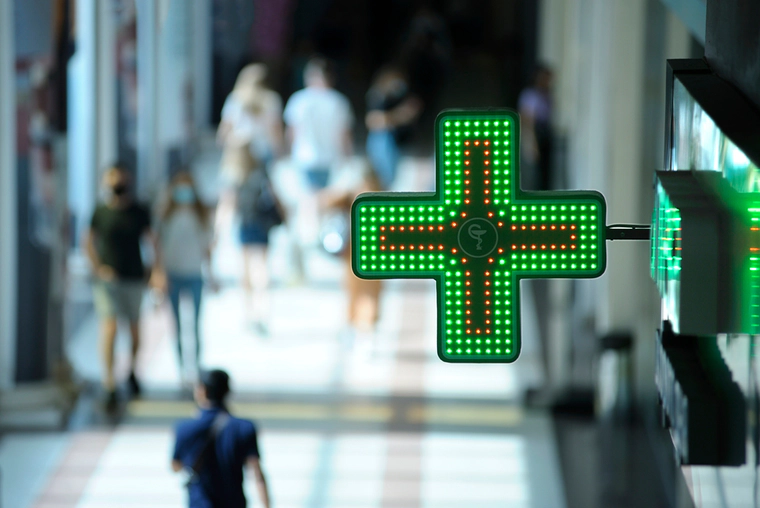
By now, everyone has heard about the disastrous effects that resulted from the misuse of opioid painkillers. From 1999 to 2021, nearly 280,000 Americans died due to overdoses involving prescription opioids1. But painkillers are not the only drugs that are ruining lives and creating addiction. Some of the drugs that are being secretly abused might surprise you. In fact, they might even be sitting in your medicine cabinet right now.
Check your home for some of these drugs that may be abused by a vulnerable person, potentially leading them to addiction.
Gabapentin
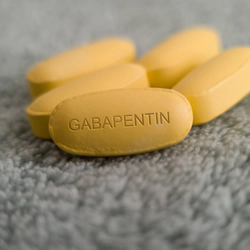
Photo by Sonis Photography/Shutterstock.com
When prescribed by a doctor, this is a medication for neuropathy resulting from a bout of shingles or the effects of diabetes. Off-label, it has been prescribed for:
- Seizures in pediatric patients
- Bipolar disorder
- Attention deficit disorder
- Restless leg syndrome
- Facial nerve pain
- Sleep disorders
- Migraines
- Drug withdrawal seizures2
Why Would Gabapentin Be Abused?
The effects sought by a person who misuses this drug include:
- A euphoric high
- Greater sociability
- Calmness
- A “zombie-like” effect
A person abusing gabapentin is likely to use other drugs at or near the same time, for example, opioid painkillers, and anti-anxiety drugs such as benzodiazepines, alcohol, or antidepressants. Most people abusing this drug do not risk overdose, but massive consumption of this drug can result in a coma or death. Individuals with a history of drug abuse were those most likely to misuse gabapentin.3 Gabapentin has the potential to be addictive.
Pregabalin
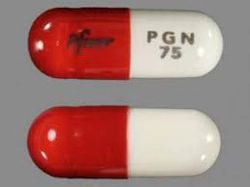
Image courtesy of lb7.uscourts.gov
This drug is related to gabapentin. It is prescribed to treat seizures, fibromyalgia, generalized anxiety disorder, and neuropathy. Those abusing it were also likely to abuse gabapentin, opioids, alcohol, or other drugs.
Its effects include:
- A lethargic, sleeping feeling
- Fatigue
- Leg pain
- Tremors
- Sense of well-being
- Euphoria
- Talkativeness
- A drunken feeling
- Dissociation from reality
When taken with other drugs or alcohol, pregabalin can cause unconsciousness. Like gabapentin, pregabalin can be addictive.4

Those who tried to withdraw reported symptoms like these:
- Severe fatigue
- Headaches
- Depression
- Joint and muscle pain
- Anxiety
- Avoidance of interactions with others
- Shivering
- Lethargy
The severity of these withdrawal symptoms drives many people back to pregabalin abuse.
Those who want to abuse this drug will swallow more than was prescribed, crush pills and snort them, or empty capsules into their mouths. A 2014 report notes that pregabalin abuse involving high doses was on the increase and that they could be fatal if the user had also taken opioids.5 A person abusing high doses could suffer seizures that result in their being taken to an emergency room, with one in five of these individuals being admitted to intensive care units.4
Over-the-Counter Drugs That Are Being Abused
Loperamide
Loperamide is the most popular anti-diarrhea ingredient on the market. It is present in dozens of formulas, including some for children. The most popular brand name for products with loperamide is Imodium.
Despite the impression many people have of over-the-counter drugs being fairly harmless, loperamide overdoses can cause heart problems and overdose deaths.6 Some people use loperamide when they are trying to self-manage symptoms as they withdraw from opioids. Loperamide has the nickname “poor man’s methadone” for that reason.
Those abusing loperamide by taking high doses are generally trying to create a euphoric effect. They may also suffer the following unintended effects:
- Constipation
- Stomach cramps
- Nausea
- Dizziness
- Fainting
- Rapid heart rate
- Irregular heartbeats
- Unresponsiveness
- Seizures
- Cardiac arrest
- Death7
In a twelve-year period, nearly 13,000 cases of loperamide poisoning were reported to US poison control centers. Nearly one in eight of these cases were serious, and 59 of them resulted in death.8
Cough Medicine with Dextromethorphan
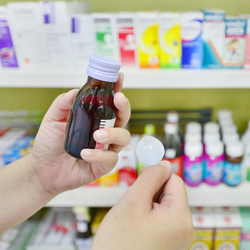
Dozens of cough medicines contain the drug dextromethorphan, and many of them are readily available on pharmacy shelves. An over-the-counter product that contains dextromethorphan will usually include “DM” in its name to indicate the presence of this ingredient.
A proper dose of this type of cough medicine is 20 milliliters or a little over one tablespoon. A person who chooses to abuse a cough medicine with dextromethorphan will take a much higher dose. They may be seeking effects like these:
- Alcohol-like or marijuana-like intoxication
- Euphoria
- Hallucinations
- Out-of-body experiences
They may not want the following effects but may experience them anyway:
- Feelings of physical distortion
- Panic attacks
- Anxiety
- Paranoia
- Aggression
- Poor motor control
- Stomach pain
- Changes to vision
- Slurred speech9
An overdose of dextromethorphan can reduce the amount of oxygen that reaches the brain. This can result in serious short-term or long-term injury, including coma, permanent brain damage, and even death.
Pseudoephedrine
Pseudoephedrine is a nasal decongestant that is present in more than 100 cold medications. It is chemically similar to amphetamine, which explains why it is a precursor chemical used in the manufacture of methamphetamine. It can be purchased over the counter but only by producing a photo ID for the pharmacist.
A person who wishes to abuse this drug will take too much or crush or chew the tablets to release all the ingredients at once. An extended period spent taking higher doses can result in addiction.
A person who abuses this drug may be seeking these effects:
- Euphoria
- Heightened energy
- Higher alertness
- A tingling sensation
But these unpleasant side effects may also occur:
- Restlessness
- Nausea
- Vomiting
- Headache
- Irritability
- Insomnia
- Lack of appetite
- Weight loss10
Children taking over-the-counter pseudoephedrine products that also include triprolidine (a second antihistamine) have been observed suffering from hallucinations involving attacking spiders and insects.11 Pseudoephedrine should not be used for children under 12 years of age.
Dimenhydrinate and Diphenhydramine
Dimenhydrinate is found in over-the-counter medications for nausea and motion sickness such as the popular medication Dramamine. Diphenhydramine is an antihistamine used to treat allergic reactions as well as motion sickness. It is available as Benadryl.
People who abuse dimenhydrinate by consuming high doses are seeking euphoria and hallucinations. They may also experience:
- Drowsiness
- Blurred vision
- Tinnitus
- Blurred vision
- Low blood pressure
- Dizziness
- Confusion
Diphenhydramine abusers may be seeking these effects:
- Elevated mood
- More energy
- Mild euphoria
But they may also experience these symptoms:
- Agitation
- Restlessness
- Anxiety
- Insomnia
- Irritability
- Trouble breathing
- Seizures
- Collapse
Drug dependence is possible after extended abuse of either dimenhydrinate or diphenhydramine.
Protecting Others from Drug Abuse and Addiction
While these medications can be helpful at times if they are used properly, they all have abuse potential. For that reason, they should be stored out of reach of anyone who might be inclined to misuse them. This could include young people who might be curious about their effects or anyone who has past or present struggles with substance abuse. The best way to store them is in a locking medicine cabinet, readily available at any home improvement store.
Just keeping these and other medications out of reach is an important step to help prevent others from starting on a path that could eventually lead them to addiction.
Sources:
-
“Opioid Overdose.” Centers for Disease Control and Prevention, 2023. CDC ↩︎
-
“Perspectives from Psychiatry, Pain and Neurology Specialists.” National Library of Medicine, 2012. NLM ↩︎
-
”Gabapentin Misuse, Abuse, and Diversion: A Systematic Review.” National Library of Medicine, 2016. NLM ↩︎
-
“Pregabalin Misuse and Abuse in Jordan: a Qualitative Study of User Experiences.” National Library of Medicine, 2017. NLM ↩︎ ↩︎
-
Profiles of pregabalin and gabapentin abuse by postmortem toxicology, 2014. https://pubmed.ncbi.nlm.nih.gov/24835028/ ↩︎
-
“Loperamide Cases Reported to United States Poison Centers, 2010–2022.” BioMed Central, 2023. BioMed Central ↩︎
-
“Over-the-Counter Medicines DrugFacts.” National Institute on Drug Abuse, 2017. NIDA ↩︎
-
“Pseudoephedrine.” MedlinePlus, 2018. MedlinePlus ↩︎
-
“Pseudoephedrine—Benefits and Risks.” National Library of Medicine, 2021. NLM ↩︎




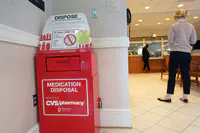

 ®
®